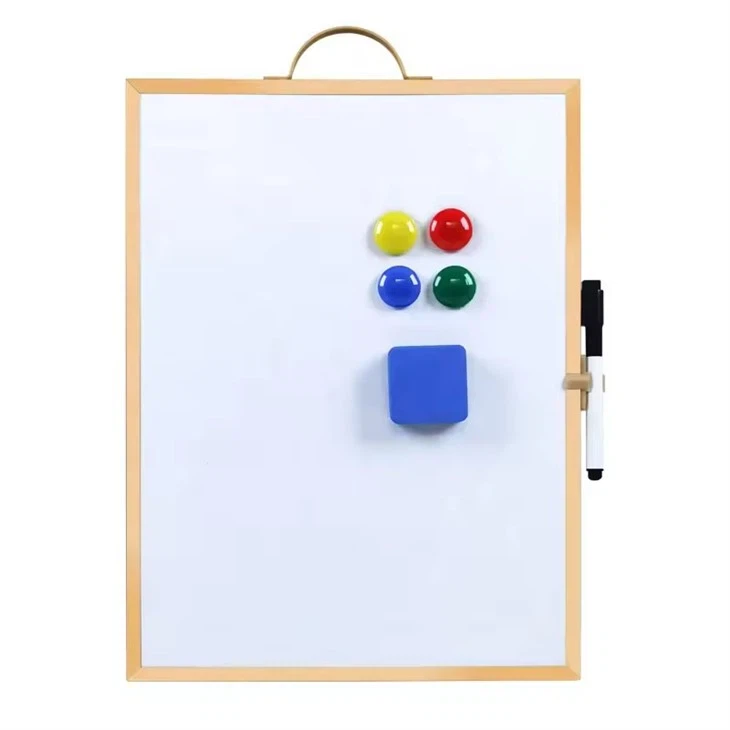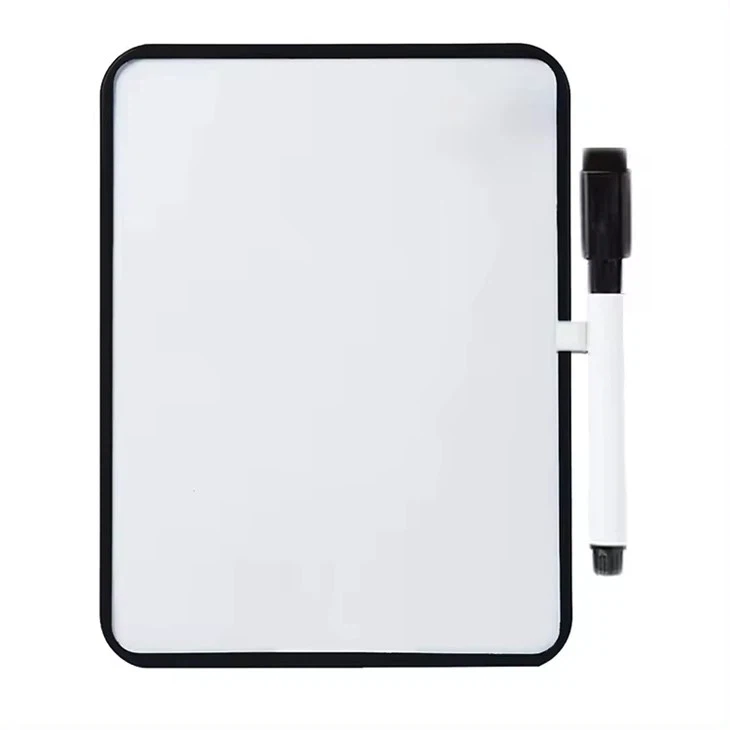Whiteboards are essential tools in educational, business, and home environments, providing a versatile surface for writing, drawing, and organizing ideas. They come in various sizes and materials, each designed to meet specific needs and preferences. Whether you're looking for a sleek glass whiteboard for your office, a durable porcelain whiteboard for the classroom, or a convenient melamine whiteboard for home use, there's a perfect option available for you.
Understanding their production process helps to appreciate their quality and functionality. The production of whiteboards involves several crucial steps to ensure durability, smoothness, and ease of use. Here is an overview of the whiteboard manufacturing process:
1. Material Selection
The production of a whiteboard starts with selecting raw materials. The most common materials include:
- Core Materials: Typically particle board, medium-density fiberboard (MDF), or steel, providing the structural integrity of the whiteboard.
- Surface Materials: Critical for writing, surfaces can be made of melamine, painted steel, porcelain (ceramic), or glass.
- Backing Materials: Usually aluminum or galvanized steel, providing additional strength and preventing warping.
2. Surface Preparation
Surface preparation varies depending on the chosen material:
- Melamine: Resin-impregnated paper is bonded to the core material under high pressure and heat, creating a smooth, non-porous surface.
- Painted Steel: A steel sheet is cleaned and coated with multiple layers of glossy white paint, then baked at high temperatures to ensure durability.
- Porcelain (Ceramic): A steel sheet is coated with a layer of porcelain enamel and baked at extremely high temperatures (up to 800°C), fusing the porcelain to the steel to create a hard, scratch-resistant surface.
- Glass: For glass whiteboards, tempered glass is cut to size and its edges are polished. The back of the glass can be painted or coated to provide a white background.
3. Cutting and Shaping
Once the materials are prepared, they are cut to the desired size and shape, involving:
- Cutting: Precision saws or laser cutters are used to achieve exact dimensions.
- Edge Finishing: Edges are smoothed and rounded to prevent injuries and improve aesthetics.
4. Frame Assembly
The frame, typically made of aluminum, is assembled and attached. This process includes:
- Cutting Frame Pieces: Aluminum extrusions are cut to fit the dimensions of the whiteboard.
- Joining Corners: The corners are mitered and joined using brackets or corner keys for a secure fit.
- Mounting the Board: The core and surface materials are mounted within the frame, ensuring a tight fit and alignment.
5. Backing and Reinforcement
For added durability and to prevent warping, a backing material is often applied:
- Applying Backing: A backing sheet, typically galvanized steel or another rigid material, is glued or otherwise adhered to the back of the whiteboard core.
- Reinforcement: Additional reinforcement strips or braces may be added to larger whiteboards to ensure stability.
6. Quality Control
Quality control is a critical step in the manufacturing process to ensure the final product meets standards:
- Surface Inspection: The writing surface is checked for smoothness, gloss, and absence of defects.
- Durability Testing: The board is tested for resistance to scratching, staining, and ghosting (residual marker marks).
- Frame and Mounting Check: Ensuring the frame is securely attached and the board is stable.
7. Final Assembly and Packaging
The final assembly involves attaching additional components such as marker trays, mounting hardware, and packaging:
- Marker Trays: Attached to the bottom of the frame, providing convenient storage for markers and erasers.
- Mounting Hardware: Brackets, hooks, or other mounting systems are included or attached to allow for easy installation.
- Packaging: The whiteboard is carefully packed to prevent damage during shipping, often using foam padding and sturdy boxes.
Conclusion
The production of whiteboards is a meticulous process that involves careful selection of materials, precise manufacturing techniques, and stringent quality control measures. Understanding this process highlights the complexity and craftsmanship involved in creating a durable, functional, and aesthetically pleasing whiteboard. Whether made from melamine, painted steel, porcelain, or glass, each type of whiteboard undergoes a series of well-defined steps to ensure it meets the needs of users in various environments.













